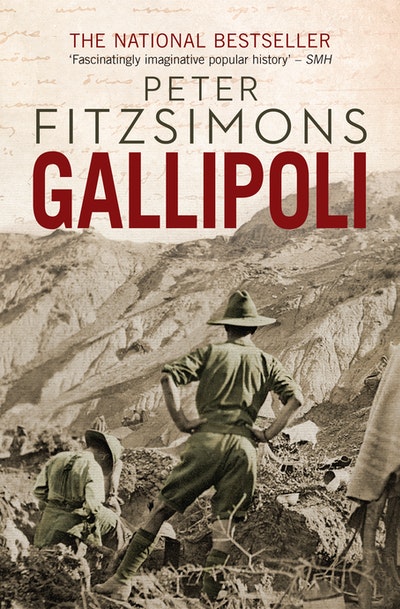Peter FitzSimons is ensuring our greatest war stories are never forgotten.
From the trenches of hell to the heights of Allied victory, Peter FitzSimons’ World War One trilogy brings to life the stories of those fighting valiantly for king and country. FitzSimons combines impeccable research with masterful writing to capture vibrant, moving and compelling accounts of life on the frontlines. And as the war progresses, he reveals the significant impact our soldiers – from top brass to infantry – had on the Allied victory and, ultimately, the future of humanity.
Gallipoli
On 25 April 1915, Allied forces landed on the Gallipoli Peninsula in present-day Turkey to secure the sea route between Britain and France in the west and Russia in the east. After eight months of terrible fighting, they would fail.
Turkey regards the victory to this day as a defining moment in its history, a heroic last stand in the defence of the nation’s Ottoman Empire. But, counter-intuitively, it would signify something perhaps even greater for the defeated Australians and New Zealanders involved: the birth of their countries’ sense of nationhood.
The Gallipoli campaign, commemorated each year on Anzac Day, reverberates with importance, but the facts of the battle – which was minor against the scale of the First World War and cost less than a sixth of the Australian deaths that occurred on the Western Front – are often forgotten or obscured. With trademark vibrancy and expert melding of writing and research, in Gallipoli Peter FitzSimons recreates the disaster as experienced by those who endured it, or perished in the attempt.
Fromelles and Pozières
On 19 July 1916, 7000 Australian soldiers – in the first major action of the AIF on the Western Front – attacked entrenched German positions at Fromelles in northern France. By the next day, there were over 5500 casualties, including nearly 2000 dead. It was a bloodbath that the Australian War Memorial describes as ‘the worst 24 hours in Australia’s entire history’.
Just days later, three Australian Divisions attacked German positions at nearby Pozières, and over the next six weeks another 23,000 casualties were suffered. Of that bitter battle, the great Australian war correspondent Charles Bean would write, ‘The field of Pozières is more consecrated by Australian fighting and more hallowed by Australian blood than any field which has ever existed…’
Yet the sad truth is that, nearly a century on from those battles, Australians know only a fraction of what occurred. Peter FitzSimons’ Fromelles and Pozières: In the Trenches of Hell brings the battles back to life and puts the reader in the moment, illustrating both the heroism displayed and the insanity of the British plan. With his extraordinary vigour and commitment to research, FitzSimons shows why this is a story about which all Australians can be proud… and angry.
Victory at Villers-Bretonneux
On the morning of 21 March 1918, the Kaiserschlacht – the biggest set-piece battle the world had ever seen – was launched. Across a 45-mile front, two million German soldiers hurled themselves at the Allied lines. Their goal: to split the British and French forces, drive all the way through to Villers-Bretonneux, destroy the town of Amiens and throttle Allied supply lines.
For two weeks the plan worked brilliantly and the Germans were able to advance without check. In desperation, British commander General Douglas Haig called upon the Australian soldiers to hold Villers-Bretonneux. Success would ensure the Germans would not win the war. What followed was a vicious counterattack that hurled the Germans back for the first time…
To this day, written above every blackboard in the primary school at Villers-Bretonneux are the words: ‘N’oublions jamais, l’Australie’ – Never Forget Australia.



































